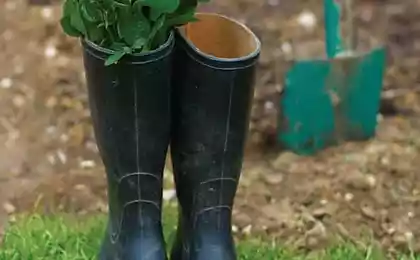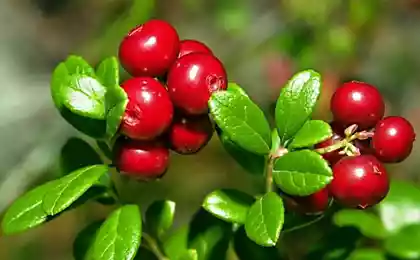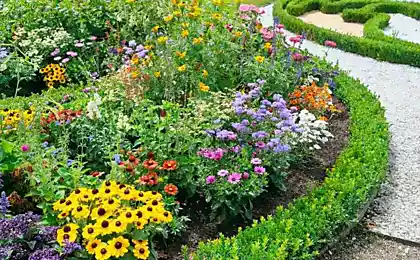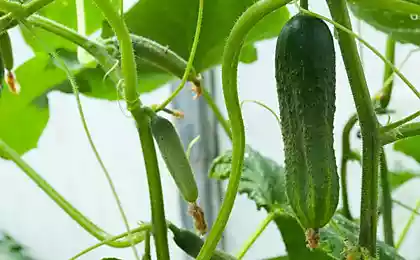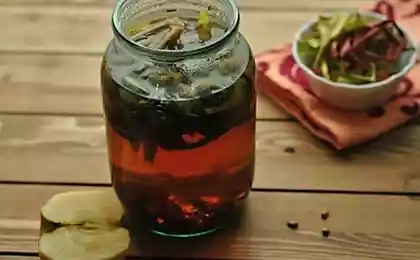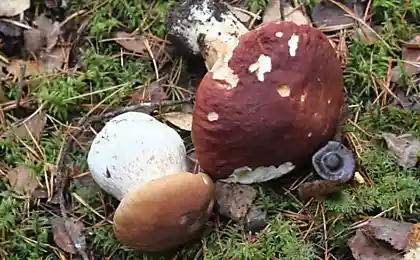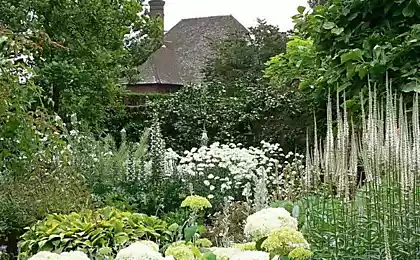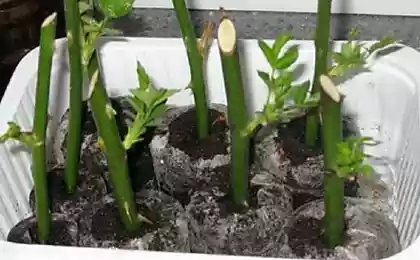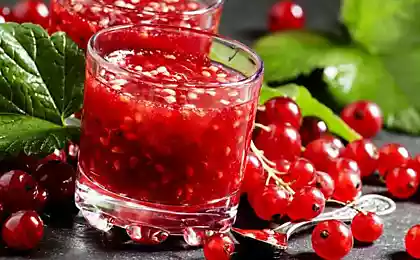541
How to grow lingonberries in the garden
Cranberries is one of the universal plants this small, beautiful shrub gives us a beautiful healing berries and is used in horticulture as a fruit and decorative plant Bush cranberry, attractive all year round, especially during the periods of flowering and fruiting.
Thirty two million seven hundred seventy eight thousand three hundred eighty nine
Industrial plantations of cranberries are in European countries and in the United States. In the world of more than two dozen varieties of cranberries, including a few Russian. And the gardeners in their plots and varietal grown large-fruited cranberries, and the usual, taken from nature Bush cranberries. With regular care in the gardens of the cranberries gives rich harvests — many times more abundant than wild plants.
In nature cranberries forms elegant clumps of different sizes, it is often found together with healthy blueberries and Lily. Cranberry grows as a perennial clones, consisting of the United rhizome clumps of different age.
Cranberries, or "cow berry" in the service of man
Cowberry (Vaccinium vitis-idaea), in the English language called "cowberry" – "cow berry". The Russian name of bilberry is associated with the ancient word "timber", "obrusit" (i.e., "dump", as the ripe fruit of the bilberry can be easily separated from the hive).
Cowberry is a small evergreen shrub, 15-25 cm tall, with uniformly leafy stems. Cowberry leaves leathery, elliptic, finely toothed, 5-25 mm long and 3-15 mm wide, with slightly rolled down edges. Top leaves are dark green and shiny, and the bottom is a lighter, matte, interspersed with dark-brown glands.
The flowers of cranberries are gathered in a short but dense drooping racemes at the ends of last year's shoots. The fruit of lingonberry – a fleshy globose berry, 4-8 mm in diameter. First ripening berry white, then become dark red and shiny.
In nature cowberry grows in dry pine forests, on sand, thickets of cedar, bleached spruce, tundra. Lingonberry is a survivor – this is a useful and beautiful plant in favorable conditions can live for 100-300 years!
Cranberries bloom in may-June; natural plants fruits ripen in August-September.
Berries cranberries have long been and are widely used in food and for medicinal purposes. In these healing fruit contains benzoic acid, promote long-term storage of the berries in fresh and pickled form. Berries of cranberries are juice, syrup, kvass, liqueur and other beverages, and from jam, jam, jam, puree, make fillings for chocolates.
Sixty million two hundred twenty seven thousand five hundred forty seven
In official medicine, the use of lingonberry leaves and leafy shoots. Fruits and cowberry leaves have a diuretic and anti-inflammatory action. Berries are also antibacterial, styptic, tonic, stimulating appetite properties. Fruit cranberries drink in gastritis (low acidity), inflammation of the kidneys, colitis, arthritis.
Long berries cranberries were used for the prevention and treatment of gout. For beriberi eat fresh berries cranberries, soaked in water and dried and cooked in sugar (or no sugar). Fresh berries cranberries recommended for use with headaches.
Planting cranberries and care of plants
In pine plantations in spruce, occasionally in deciduous forests is growing one of our favorite berries – cranberries. Its Mature fruits are red, juicy, sweet with a slightly bitter aftertaste. Elegant shrub cowberry has evergreen leaves, shiny and leathery — on top they are dark green with sunken veins, and the bottom matte and pale-lined blackish punctate glands. There is another feature of their structure: the leaves of lingonberry curved on the lower side edges.
Bushes of cranberries can be transferred from nature to the garden and use in landscape design. They create a solid or dense mats of low curb and look great along the garden paths, and appropriate in rock gardens and mixborders.
For a planting of cranberries in the garden emit the light phase without excessive moisture. At high groundwater level are satisfied with the raised ridge.
The successful cultivation of cranberries is only possible with acidic soil reaction (pH 3.0 to 5.5). As the best substrate for the garden cranberries recommended mixture of peat with coarse sand (in the ratio 3:1).
Taken from nature seedlings cranberries are better planted in spring. To complete rooting in a new place (near the Crescent) is recommended pritenyat plants covering materials.
Varietal seedlings potted cranberries with closed root system (ECS) stand in open ground with a prepared substrate carefully, keeping the root ball. Seedlings with MCS can be planted in the garden throughout the garden season, because their root system is not damaged, so potted plants take root quickly and easily adapt to new conditions.
When planting cranberries at the bottom of the planting hole to a depth of 30 cm is placed drainage layer (gravel or bark), and then carefully planted the seedlings, not buried them.
In single row plantings of cranberries kept the distance between the rows about 45 cm between plants in a row of about 20 cm In belt plantings of cranberries the distance between the strips (including 2-3 rows) of about 60 cm
Immediately after tree planting cranberries abundantly watered, and the area of mulch (sawdust or peat layer of about 3-4 cm). Planting mulching helps to preserve moisture in the substrate and prevents the appearance of weeds.
For good development of plants and of obtaining consistently high yields of cranberries, it is important to maintain sufficient humidity of the substrate during the whole vegetation period.
Near planted seedlings in the second year there are new bushes of cranberries produced from underground shoots, rhizomes. Due to this, neighboring plants gradually merge, forming a picturesque cranberry curtain, pleasing high yields.
However, over time these garden clumps become too thick, what happens in 4-5 years. Then the extra bushes of cranberries dug and transplanted to a new location, but you can also use them as medicinal raw materials.
For fertilizing seedlings cranberries instead of fertilizer is better to make regular fresh peat moss as mulch. Mineral and organic fertilizers have a negative impact on planting of cranberries – it defeats the compactness of the bushes and reduced their harvest, aktiviziruyutsya weeds. In very old plantations of cranberries, it is recommended to apply special fertilizer for Heather plants.
The cranberries are fragrant, rich in nectar pale pink flowers in the shape of little bells. Flowering lasts 20-30 days. With the threat of the return of spring frosts during the flowering period of blueberries and fruit plants-casts covering material.
Ninety three million nine hundred thirteen thousand three hundred sixty five
Popular varieties of cranberries
For industrial production and Amateur gardening is now widely used many varieties of cranberries. Their distinctive features are: high decorative bushes of beautiful shapes, including dwarf and dwarf; usually two waves of fruiting (mid-to-late summer and autumn) and a large yield of the bushes; large and very tasty sour-sweet berries with a pleasant light bitterness.
Among the contemporary range we can distinguish the following popular varieties of cranberries European and Russian selection:
When landing a well-developed varietal seedlings cranberries begins to bear fruit in autumn in the first year, and a full abundant harvest usually yields in the third year.
From natural plants and most varieties of cranberries in the middle lane berries begin to ripen in the second half of August, changing the color from green to white-pink and dark red.
After maturation of the fruits cranberries a few days should remain on the Bush – at this time, they accumulate sugar, so that they become more sweet and tasty. And also increases the amount of benzoic acid contributing to the safety of berries after harvest in dry form within a month.
Reproduction cranberry seeds and vegetative
Cranberries can be propagated by seeds. Extracted from the berries of cowberry seeds to sow in the garden for the winter, seeds were natural stratifikacionnaya.
When spring sowing seedlings, seeds hermetically stored cranberries pre-stratification for 4 months (in moist sand in a refrigerator at a temperature of 4C). Then seeds are sown in the substrate of peat and sand (ratio 3:2) with significant acidity of pH 3.5 to 4.5.
Stratified seeds of cranberries at the temperature of the contents of the crops of about 20 ° C begin to germinate in about 2 weeks, but raggedly — new shoots can appear for another 3 weeks. In the first year of life seedlings of lingonberry develop slowly, but they are beginning to branch out; their height is about 5 cm First flowering and fruiting of the seedlings starts at the age of 4-5 years.
You can propagate lingonberries vegetatively: cuttings (stem, rhizomatous) and shrubs occurring on the rhizome of the mother plant. Cuttings cranberries need to prepare with some margin – with the expectation that the successfully rooted cuttings usually half or a little more.
Lignified shoots for grafting cranberries are harvested in the spring when the swelling buds in late April, and the green cuttings are cut in the summer, in July. Cuttings should be 6-8 cm; lower leaves are removed.
If planting is required to store or transport cuttings, they are Packed in damp sphagnum moss and kept in a cool place at a temperature of 0...+5C.
As a substrate for rooting cuttings of cranberries are used the ground taken in the woods under conifers or near the red bilberry and sphagnum peat, perlite, a mixture of peat and sand (3:2). Cuttings deepen, leaving the surface of the substrate 2-3 buds.
Cuttings obtained from seedlings grown in the same place for two years and then transplanted to a permanent place where they come into fruition after a successful rooting.
Due to the ability of cranberries to form subterranean shoots of the rhizome and growth from new bushes, over time, of one seedling you can get a lot of young plants. They are separated by the shears from the barn together with part of the rhizome. Unlike planted on the rooting of cuttings cranberries, rooting subsidiary of the bushes almost completely, and in the second year they begin to bloom and the berries.
Fifty million four hundred sixty three thousand two hundred twenty
Cranberries in medicine
Fresh, pickled and boiled berries of a cowberry it is possible to treat Hypo - and anatsidnyh gastritis, rheumatism, gout, diabetes. Fresh and frozen berries cranberries and cranberry syrup exacerbate vision.
Aqueous extract of berries of cranberries – a nice drink for feverish patients and temperaturewhich.
Keep in mind that berries cranberries act as a strong diuretic. Remember, in the poems of Pushkin: "...I am afraid, cowberry water to me would not do harm...". Harm, I assure you, will not! Even large doses of cranberries without harmful effects on the kidneys.
Landscape design ideas using gabions
How to create a Moon Garden in the country
This fully applies to the leaves of the cowberry, which is used as a diuretic, disinfectant and astringent in kidney stone disease, inflammation of the kidneys and bladder, and in gout, rheumatism and edema. Gather them in early spring (before flowering Bush and in autumn after the ripening of berries. Prepare broth at the rate of 2 tablespoons per 3 cups of boiling water. Drink a decoction of cowberry leaves a quarter Cup 3 times a day before meals.
Contraindication to the use of cranberries can serve as hyperacid gastritis, ulcerative colitis.
Grow on his land is beautiful and healing cranberries, which for many years decorate the garden and provide your family with tasty and healthy berries! published
Author: Mindy S. Rodionova
P. S. And remember, only by changing their consumption — together we change the world! ©
Source: www.gardenia.ru/pages/brusnika002.htm
Thirty two million seven hundred seventy eight thousand three hundred eighty nine
Industrial plantations of cranberries are in European countries and in the United States. In the world of more than two dozen varieties of cranberries, including a few Russian. And the gardeners in their plots and varietal grown large-fruited cranberries, and the usual, taken from nature Bush cranberries. With regular care in the gardens of the cranberries gives rich harvests — many times more abundant than wild plants.
In nature cranberries forms elegant clumps of different sizes, it is often found together with healthy blueberries and Lily. Cranberry grows as a perennial clones, consisting of the United rhizome clumps of different age.
Cranberries, or "cow berry" in the service of man
Cowberry (Vaccinium vitis-idaea), in the English language called "cowberry" – "cow berry". The Russian name of bilberry is associated with the ancient word "timber", "obrusit" (i.e., "dump", as the ripe fruit of the bilberry can be easily separated from the hive).
Cowberry is a small evergreen shrub, 15-25 cm tall, with uniformly leafy stems. Cowberry leaves leathery, elliptic, finely toothed, 5-25 mm long and 3-15 mm wide, with slightly rolled down edges. Top leaves are dark green and shiny, and the bottom is a lighter, matte, interspersed with dark-brown glands.
The flowers of cranberries are gathered in a short but dense drooping racemes at the ends of last year's shoots. The fruit of lingonberry – a fleshy globose berry, 4-8 mm in diameter. First ripening berry white, then become dark red and shiny.
In nature cowberry grows in dry pine forests, on sand, thickets of cedar, bleached spruce, tundra. Lingonberry is a survivor – this is a useful and beautiful plant in favorable conditions can live for 100-300 years!
Cranberries bloom in may-June; natural plants fruits ripen in August-September.
Berries cranberries have long been and are widely used in food and for medicinal purposes. In these healing fruit contains benzoic acid, promote long-term storage of the berries in fresh and pickled form. Berries of cranberries are juice, syrup, kvass, liqueur and other beverages, and from jam, jam, jam, puree, make fillings for chocolates.
Sixty million two hundred twenty seven thousand five hundred forty seven
In official medicine, the use of lingonberry leaves and leafy shoots. Fruits and cowberry leaves have a diuretic and anti-inflammatory action. Berries are also antibacterial, styptic, tonic, stimulating appetite properties. Fruit cranberries drink in gastritis (low acidity), inflammation of the kidneys, colitis, arthritis.
Long berries cranberries were used for the prevention and treatment of gout. For beriberi eat fresh berries cranberries, soaked in water and dried and cooked in sugar (or no sugar). Fresh berries cranberries recommended for use with headaches.
Planting cranberries and care of plants
In pine plantations in spruce, occasionally in deciduous forests is growing one of our favorite berries – cranberries. Its Mature fruits are red, juicy, sweet with a slightly bitter aftertaste. Elegant shrub cowberry has evergreen leaves, shiny and leathery — on top they are dark green with sunken veins, and the bottom matte and pale-lined blackish punctate glands. There is another feature of their structure: the leaves of lingonberry curved on the lower side edges.
Bushes of cranberries can be transferred from nature to the garden and use in landscape design. They create a solid or dense mats of low curb and look great along the garden paths, and appropriate in rock gardens and mixborders.
For a planting of cranberries in the garden emit the light phase without excessive moisture. At high groundwater level are satisfied with the raised ridge.
The successful cultivation of cranberries is only possible with acidic soil reaction (pH 3.0 to 5.5). As the best substrate for the garden cranberries recommended mixture of peat with coarse sand (in the ratio 3:1).
Taken from nature seedlings cranberries are better planted in spring. To complete rooting in a new place (near the Crescent) is recommended pritenyat plants covering materials.
Varietal seedlings potted cranberries with closed root system (ECS) stand in open ground with a prepared substrate carefully, keeping the root ball. Seedlings with MCS can be planted in the garden throughout the garden season, because their root system is not damaged, so potted plants take root quickly and easily adapt to new conditions.
When planting cranberries at the bottom of the planting hole to a depth of 30 cm is placed drainage layer (gravel or bark), and then carefully planted the seedlings, not buried them.
In single row plantings of cranberries kept the distance between the rows about 45 cm between plants in a row of about 20 cm In belt plantings of cranberries the distance between the strips (including 2-3 rows) of about 60 cm
Immediately after tree planting cranberries abundantly watered, and the area of mulch (sawdust or peat layer of about 3-4 cm). Planting mulching helps to preserve moisture in the substrate and prevents the appearance of weeds.
For good development of plants and of obtaining consistently high yields of cranberries, it is important to maintain sufficient humidity of the substrate during the whole vegetation period.
Near planted seedlings in the second year there are new bushes of cranberries produced from underground shoots, rhizomes. Due to this, neighboring plants gradually merge, forming a picturesque cranberry curtain, pleasing high yields.
However, over time these garden clumps become too thick, what happens in 4-5 years. Then the extra bushes of cranberries dug and transplanted to a new location, but you can also use them as medicinal raw materials.
For fertilizing seedlings cranberries instead of fertilizer is better to make regular fresh peat moss as mulch. Mineral and organic fertilizers have a negative impact on planting of cranberries – it defeats the compactness of the bushes and reduced their harvest, aktiviziruyutsya weeds. In very old plantations of cranberries, it is recommended to apply special fertilizer for Heather plants.
The cranberries are fragrant, rich in nectar pale pink flowers in the shape of little bells. Flowering lasts 20-30 days. With the threat of the return of spring frosts during the flowering period of blueberries and fruit plants-casts covering material.
Ninety three million nine hundred thirteen thousand three hundred sixty five
Popular varieties of cranberries
For industrial production and Amateur gardening is now widely used many varieties of cranberries. Their distinctive features are: high decorative bushes of beautiful shapes, including dwarf and dwarf; usually two waves of fruiting (mid-to-late summer and autumn) and a large yield of the bushes; large and very tasty sour-sweet berries with a pleasant light bitterness.
Among the contemporary range we can distinguish the following popular varieties of cranberries European and Russian selection:
- Coral (Koralle) – spherical shrub height and width more than 30 cm;
- Red pearl (Red Pearl) is a densely branched plant the size of 20-30 cm.
- Ammerland (Ammerland) – compact globular shrub height and width of 30 cm;
- Integrine (Erntekrone) - low shrub to 20 cm;.
- Arnesen (Ernlescgen) - tall shrub (up to 40 cm) with very large berries;,
- Masovia (Masovia) - low-growing shrubs (to 15 cm) quickly form a continuous carpet;
- Belavska Runo (Runo Bielawskie) – compact dense clumps with a size of 25-30 cm;
- Linnea (Linnea) — ilen weakly ramified shrubs (up to 25 cm) with large leaves;
- IDA (Ida) - the thick bushes in the form of a dense ball the size of 15-20 cm;
- Sanna (Sanna) – compact thick bushes quickly form a continuous carpet;
- Sousse said (Sussi) - dwarf shrub 10-20 cm;
- Kostroma pink - compact branching bushes (15 cm) with pink berries;
- Kostromitsky - very dense, historisierende bushes with a height of 15-18 cm, early maturing;
- Ruby - bushes 15-20 cm, late maturing.
When landing a well-developed varietal seedlings cranberries begins to bear fruit in autumn in the first year, and a full abundant harvest usually yields in the third year.
From natural plants and most varieties of cranberries in the middle lane berries begin to ripen in the second half of August, changing the color from green to white-pink and dark red.
After maturation of the fruits cranberries a few days should remain on the Bush – at this time, they accumulate sugar, so that they become more sweet and tasty. And also increases the amount of benzoic acid contributing to the safety of berries after harvest in dry form within a month.
Reproduction cranberry seeds and vegetative
Cranberries can be propagated by seeds. Extracted from the berries of cowberry seeds to sow in the garden for the winter, seeds were natural stratifikacionnaya.
When spring sowing seedlings, seeds hermetically stored cranberries pre-stratification for 4 months (in moist sand in a refrigerator at a temperature of 4C). Then seeds are sown in the substrate of peat and sand (ratio 3:2) with significant acidity of pH 3.5 to 4.5.
Stratified seeds of cranberries at the temperature of the contents of the crops of about 20 ° C begin to germinate in about 2 weeks, but raggedly — new shoots can appear for another 3 weeks. In the first year of life seedlings of lingonberry develop slowly, but they are beginning to branch out; their height is about 5 cm First flowering and fruiting of the seedlings starts at the age of 4-5 years.
You can propagate lingonberries vegetatively: cuttings (stem, rhizomatous) and shrubs occurring on the rhizome of the mother plant. Cuttings cranberries need to prepare with some margin – with the expectation that the successfully rooted cuttings usually half or a little more.
Lignified shoots for grafting cranberries are harvested in the spring when the swelling buds in late April, and the green cuttings are cut in the summer, in July. Cuttings should be 6-8 cm; lower leaves are removed.
If planting is required to store or transport cuttings, they are Packed in damp sphagnum moss and kept in a cool place at a temperature of 0...+5C.
As a substrate for rooting cuttings of cranberries are used the ground taken in the woods under conifers or near the red bilberry and sphagnum peat, perlite, a mixture of peat and sand (3:2). Cuttings deepen, leaving the surface of the substrate 2-3 buds.
Cuttings obtained from seedlings grown in the same place for two years and then transplanted to a permanent place where they come into fruition after a successful rooting.
Due to the ability of cranberries to form subterranean shoots of the rhizome and growth from new bushes, over time, of one seedling you can get a lot of young plants. They are separated by the shears from the barn together with part of the rhizome. Unlike planted on the rooting of cuttings cranberries, rooting subsidiary of the bushes almost completely, and in the second year they begin to bloom and the berries.
Fifty million four hundred sixty three thousand two hundred twenty
Cranberries in medicine
Fresh, pickled and boiled berries of a cowberry it is possible to treat Hypo - and anatsidnyh gastritis, rheumatism, gout, diabetes. Fresh and frozen berries cranberries and cranberry syrup exacerbate vision.
Aqueous extract of berries of cranberries – a nice drink for feverish patients and temperaturewhich.
Keep in mind that berries cranberries act as a strong diuretic. Remember, in the poems of Pushkin: "...I am afraid, cowberry water to me would not do harm...". Harm, I assure you, will not! Even large doses of cranberries without harmful effects on the kidneys.
Landscape design ideas using gabions
How to create a Moon Garden in the country
This fully applies to the leaves of the cowberry, which is used as a diuretic, disinfectant and astringent in kidney stone disease, inflammation of the kidneys and bladder, and in gout, rheumatism and edema. Gather them in early spring (before flowering Bush and in autumn after the ripening of berries. Prepare broth at the rate of 2 tablespoons per 3 cups of boiling water. Drink a decoction of cowberry leaves a quarter Cup 3 times a day before meals.
Contraindication to the use of cranberries can serve as hyperacid gastritis, ulcerative colitis.
Grow on his land is beautiful and healing cranberries, which for many years decorate the garden and provide your family with tasty and healthy berries! published
Author: Mindy S. Rodionova
P. S. And remember, only by changing their consumption — together we change the world! ©
Source: www.gardenia.ru/pages/brusnika002.htm
Plant thujopsis on the site: maintenance free and can live 500 years!
19 simply brilliant tips for parents






